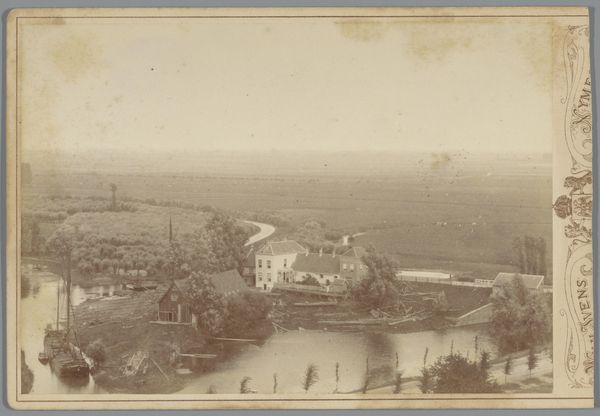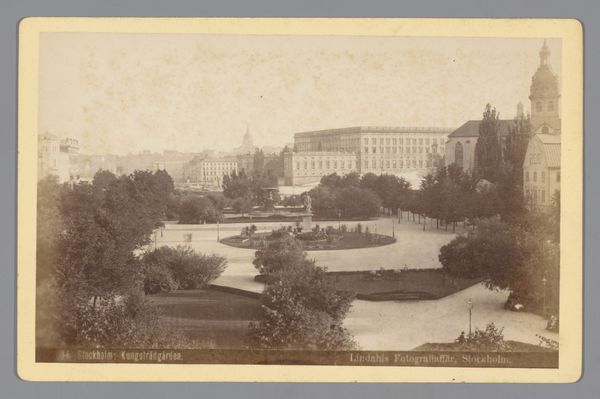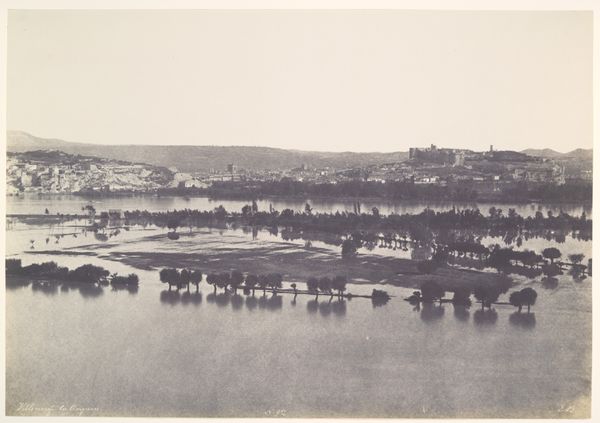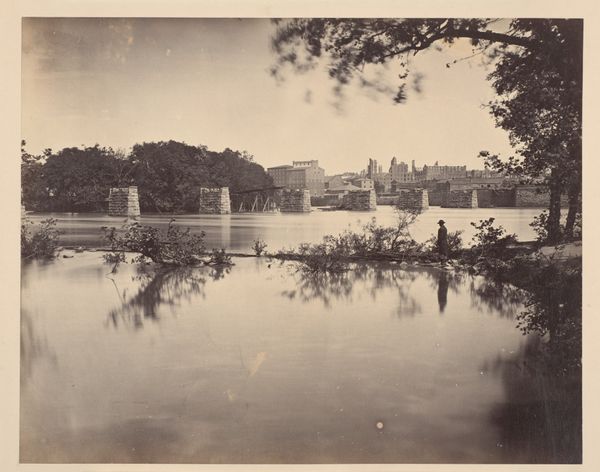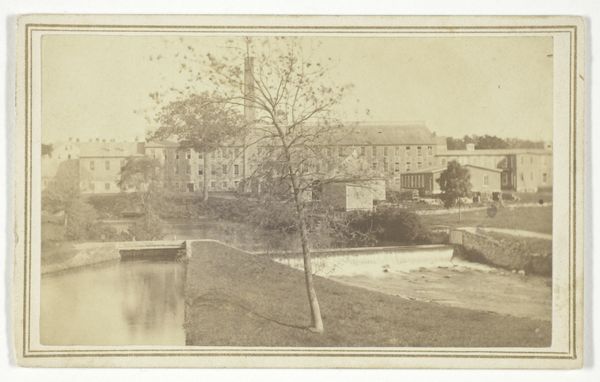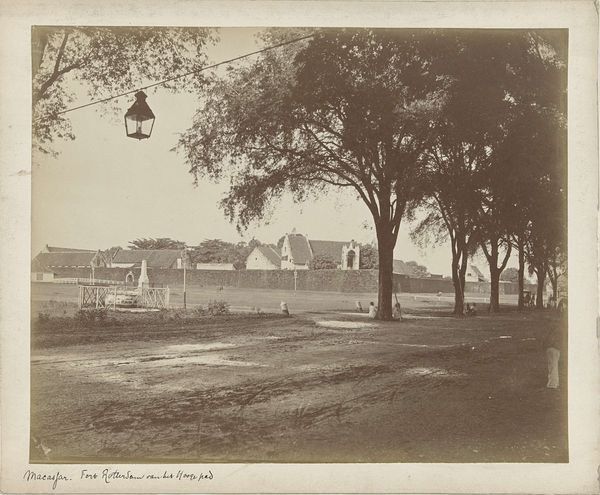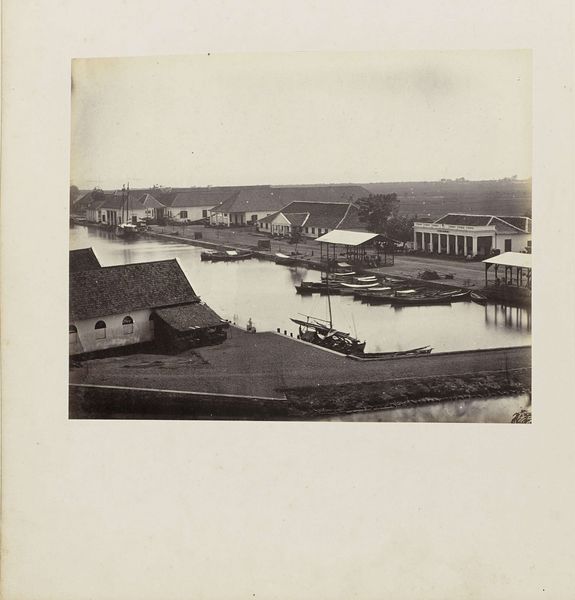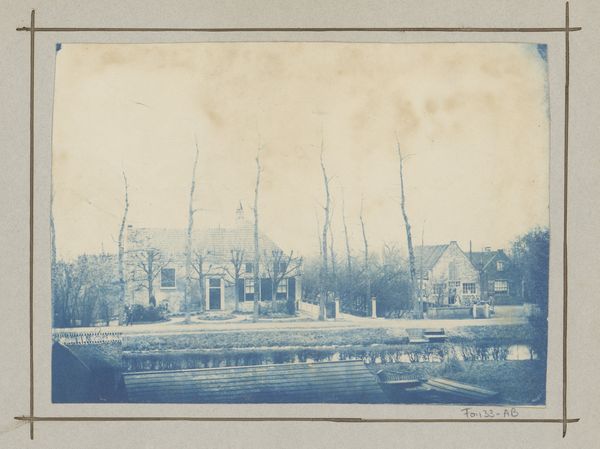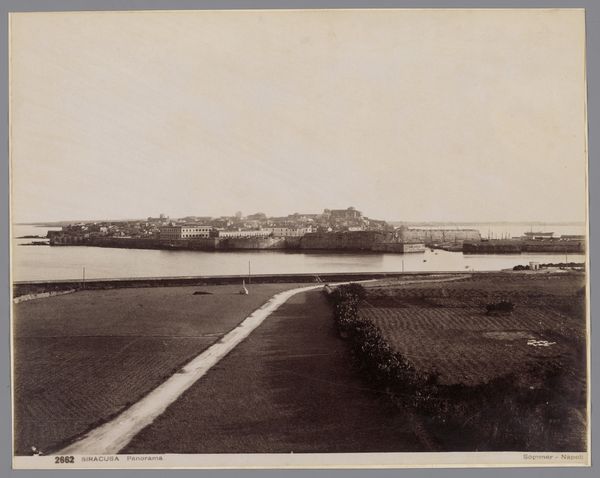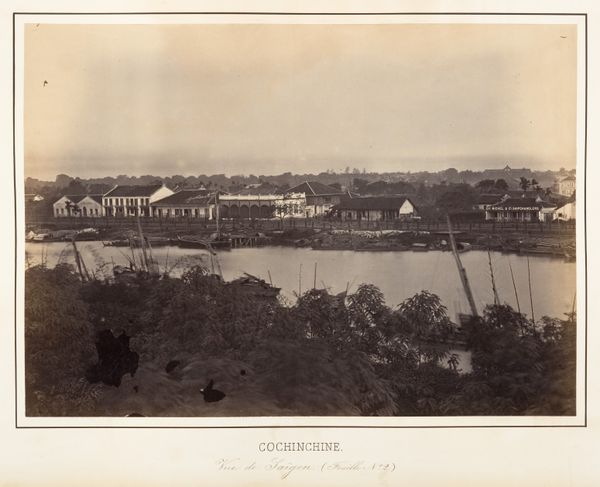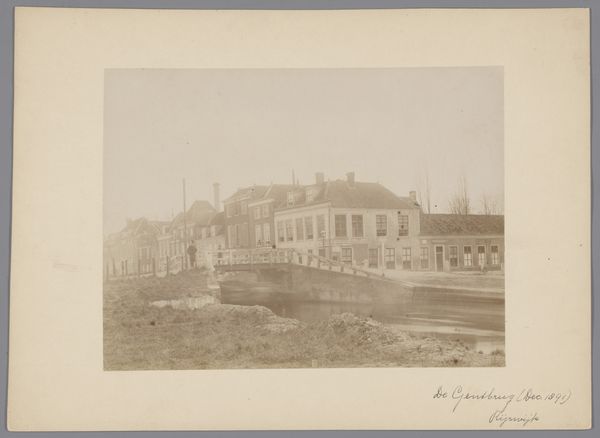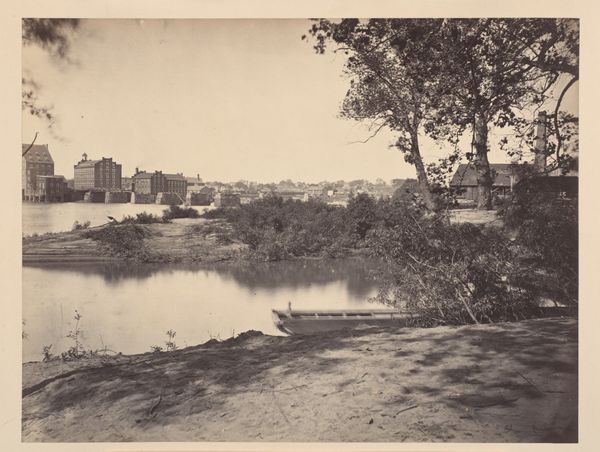
photography
#
landscape
#
photography
#
orientalism
Dimensions: height 215 mm, width 295 mm
Copyright: Rijks Museum: Open Domain
Editor: Here we have Hippolyte Arnoux’s photograph, "Quai Mohammed Ali in Ismaïlia," dating from sometime between 1863 and 1890. It's a landscape view dominated by a long canal, all in muted sepia tones. What do you make of it? Curator: For me, the immediate draw is the relationship between the photographic process and the engineering project itself, the Suez Canal. Consider the albumen print; created through a complex process involving coating paper with egg whites and silver nitrate. The making of the canal relied on intensive labor and resource extraction, reflecting imperial power structures. So how does the materiality of this photograph, this "Orientalist" landscape, reveal its connection to colonial infrastructure? Editor: That's interesting! I hadn't considered the albumen print as a material reflection of the canal's construction. I was focused on the photograph as a representation of place. Curator: The image naturalizes a massive construction project by rendering it picturesque. Look closely; the angle, the tonality, everything presents it as something pre-existing. Now, how does Arnoux's choice to photograph this specific view rather than, say, a construction site, obscure the exploitation inherent in building the canal? Where is the human cost? Editor: I see your point. By focusing on the tranquil scene, it kind of erases the story of the people who built it, focusing on aestheticizing a moment in time. Curator: Precisely! And that aestheticization serves a very specific ideological purpose. Now consider who the audience for this image was, and how it shaped perceptions of the project. Editor: This really highlights the importance of looking beyond the surface of an image and understanding its connection to broader social and economic systems. It makes me realize how easy it is to overlook those connections. Curator: Absolutely. Paying attention to those details unlocks richer meanings within the image.
Comments
No comments
Be the first to comment and join the conversation on the ultimate creative platform.
